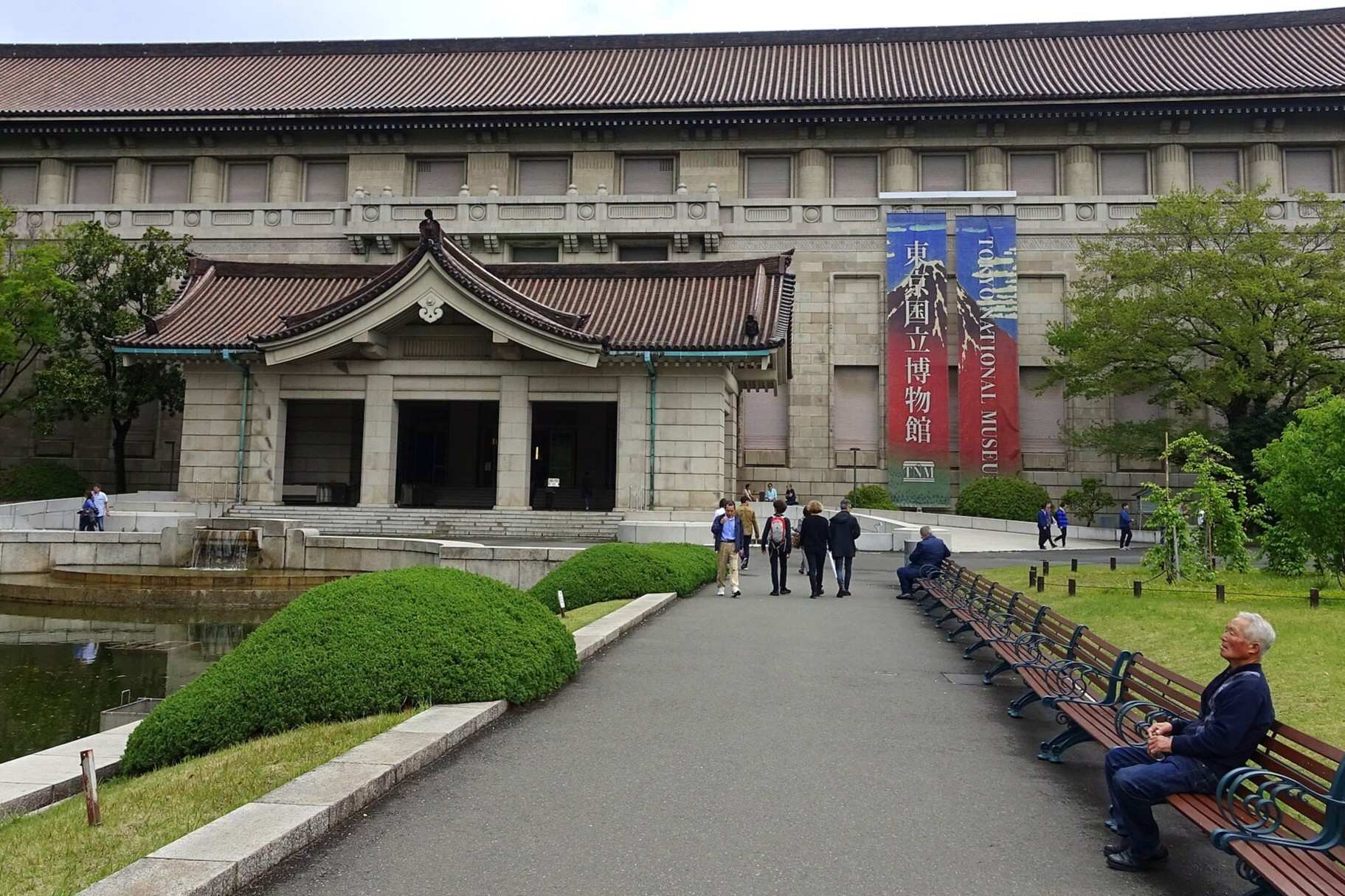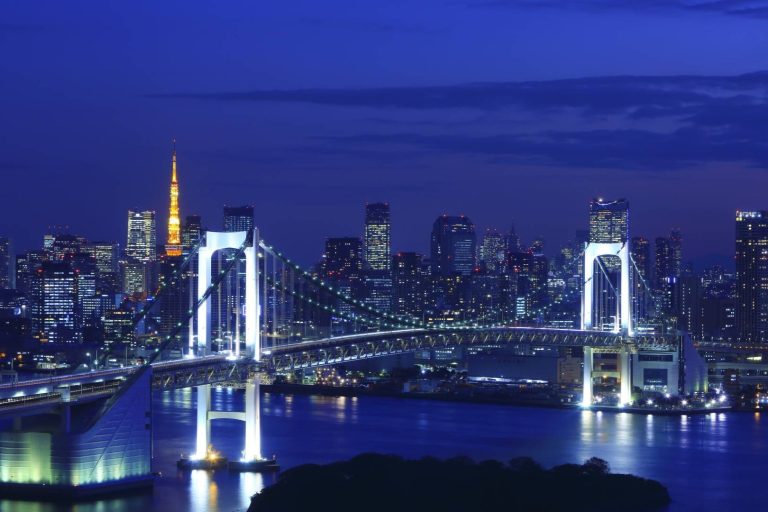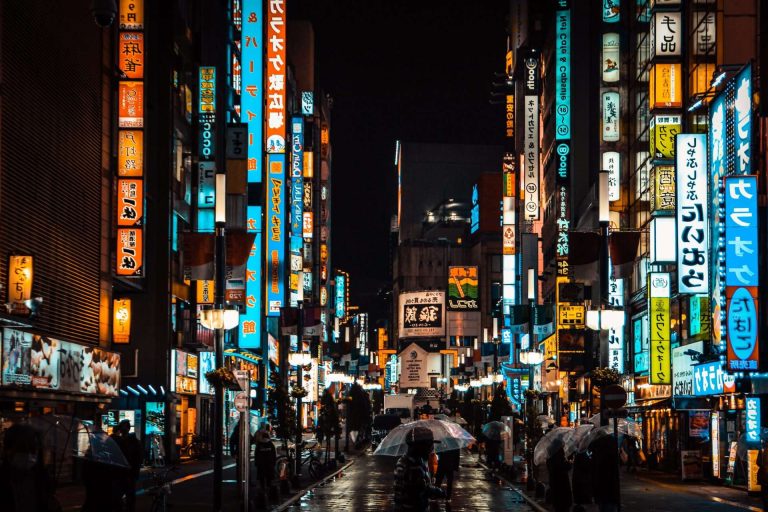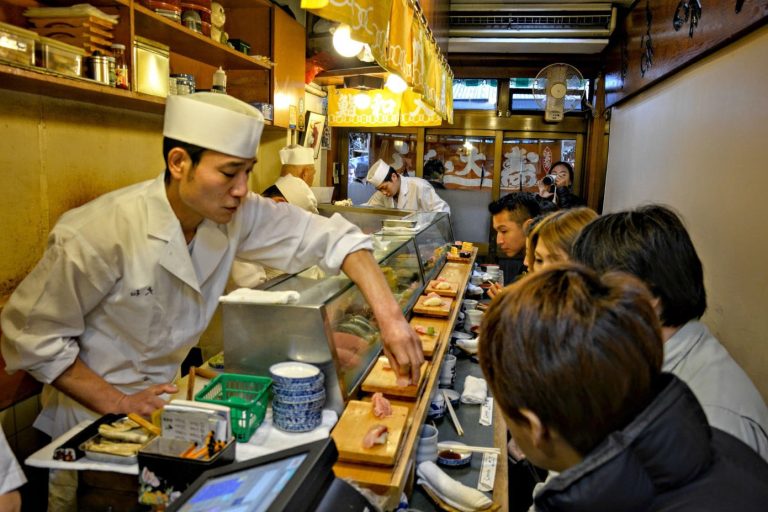Overview of Ueno Park
Ueno Park stands as one of Tokyo’s most treasured cultural destinations, seamlessly blending natural beauty with world-class museums and historical significance. This expansive green space in the heart of the city offers visitors a unique opportunity to experience centuries of Japanese history alongside cutting-edge art exhibitions and peaceful garden walks.
The park’s strategic location makes it easily accessible from multiple parts of Tokyo, while its diverse attractions cater to art enthusiasts, history buffs, families, and nature lovers alike. From ancient temple grounds to modern museum galleries, Ueno Park represents a microcosm of Japan’s cultural evolution.
Historical significance of Ueno Park
The land that now comprises Ueno Park carries deep historical roots dating back to the Edo period. Originally, this area served as the grounds for Kaneiji Temple, one of the most important Buddhist temples in Japan and the family temple of the Tokugawa shogunate. The temple complex was vast, encompassing much of what visitors see today as parkland and museum spaces. During the Meiji Restoration, significant portions of the temple grounds were repurposed, though remnants of this sacred heritage remain visible throughout the park.
Transformation into a Western-style park
In 1873, Ueno Park underwent a remarkable transformation, becoming one of Japan’s first Western-style public parks. This conversion reflected the country’s broader modernization efforts during the Meiji era, as Japan sought to adopt and adapt Western concepts of public space and urban planning. The park’s design incorporated both traditional Japanese elements and new Western landscaping principles, creating a unique hybrid that would influence park development throughout Japan.
Key features and attractions
The park encompasses several distinct areas, each offering different experiences for visitors. Shinobazu Pond serves as a natural centerpiece, providing habitat for waterfowl and featuring the iconic Bentendo Hall on its small island. The pond’s lotus flowers create spectacular displays during summer months, while winter brings migrating birds that delight birdwatchers. Multiple walking paths wind through mature trees, connecting the various museums, temples, and recreational areas that make Ueno Park a comprehensive cultural destination.
Accessibility and nearby accommodations
Ueno Park’s location near JR Ueno Station ensures excellent transportation connections throughout Tokyo and beyond. The station serves as a major hub for both local and long-distance travel, making the park an ideal starting point for exploring other destinations. Several high-quality hotels in the vicinity provide convenient accommodation options, with luxury properties like MIMARU Tokyo Ueno Inaricho offering modern amenities and easy access to the park’s attractions.
Major Museums in Ueno Park
Ueno Park houses an impressive concentration of museums, creating what many consider Japan’s premier cultural district. These institutions collectively showcase thousands of years of artistic achievement, scientific discovery, and cultural heritage, making the park an essential destination for anyone seeking to understand Japanese civilization and its place in the global context.
The museums range from traditional to contemporary, covering subjects from ancient Japanese art to cutting-edge scientific research. Many feature rotating exhibitions that bring international works to Tokyo audiences, while permanent collections provide comprehensive overviews of their respective fields.
Tokyo National Museum
The Tokyo National Museum stands as Japan’s oldest and largest museum, housing the world’s most extensive collection of Japanese cultural artifacts. Established in 1872, the museum’s main building showcases archaeological findings, Buddhist sculptures, samurai armor, traditional textiles, and exquisite examples of Japanese painting and calligraphy. The Honkan (Japanese Gallery) building itself represents architectural significance, designed in the Imperial Crown Style that became popular during the 1930s. Special exhibitions regularly feature international loans and themed displays that provide deeper insights into specific periods or artistic movements.
Tokyo Metropolitan Art Museum
The Tokyo Metropolitan Art Museum focuses primarily on contemporary and modern art, serving as a platform for both established and emerging artists. The museum’s distinctive brick architecture creates an inviting atmosphere for exploring diverse artistic expressions. Regular exhibitions feature works by local Tokyo artists alongside international contemporary pieces, while the museum’s educational programs engage visitors of all ages. The facility also hosts art competitions and community events that strengthen connections between artists and the public.
National Museum for Western Art
Designed by renowned architect Le Corbusier, the National Museum for Western Art represents a masterpiece of modernist architecture while housing an exceptional collection of European paintings and sculptures. The museum’s permanent collection includes works by Monet, Renoir, Picasso, and Rodin, providing Tokyo visitors with access to Western artistic traditions without traveling abroad. The building itself was designated a UNESCO World Heritage Site as part of Le Corbusier’s architectural work, making it significant both for its contents and its design.
Ueno Royal Museum
The Ueno Royal Museum occupies a more intimate space within the park, focusing on special exhibitions that rotate throughout the year. These carefully curated shows often feature collaborations with international museums and private collections, bringing rare artworks and cultural artifacts to Tokyo audiences. The museum’s smaller scale allows for more focused presentations that can provide deeper exploration of specific themes, artists, or historical periods than might be possible in larger institutions.
Shitamachi Museum (currently closed for renovations)
The Shitamachi Museum, though currently undergoing renovations until 2024, typically offers visitors insights into traditional Tokyo life during the Edo and early modern periods. The museum recreates historical streetscapes and living spaces, allowing visitors to experience how ordinary people lived, worked, and played in old Tokyo. Interactive exhibits and preserved artifacts provide tangible connections to the city’s past, making history accessible and engaging for contemporary audiences.
Cultural Experiences in Ueno
Ueno Park’s museums collectively offer some of the most comprehensive cultural experiences available in Tokyo. Visitors can trace artistic development across centuries, explore scientific discoveries, and engage with both traditional and contemporary expressions of creativity. The concentration of these institutions creates opportunities for comparative study and cross-cultural understanding that would be difficult to achieve elsewhere.
The park’s cultural offerings extend beyond static displays to include educational programs, workshops, and special events that bring art and history to life. Many museums provide English-language resources and guided tours, making their collections accessible to international visitors.
Exhibits on Japanese art and history
The Japanese art and history exhibits throughout Ueno’s museums provide comprehensive overviews of the nation’s cultural development. From prehistoric pottery to contemporary installations, these collections trace artistic evolution while placing creative works within their historical contexts. Buddhist art receives particular attention, with sculptures, paintings, and ceremonial objects illustrating the religion’s profound influence on Japanese culture. Samurai artifacts, including armor, weapons, and personal belongings, offer insights into the warrior class that shaped much of Japanese history.
Western art exhibits
Western art exhibits in Ueno Park provide Tokyo residents and visitors with access to European and American artistic traditions. The National Museum for Western Art’s permanent collection spans several centuries, while rotating exhibitions bring contemporary international works to Japanese audiences. These displays often highlight cultural exchange between East and West, showing how artistic ideas traveled and evolved as they crossed cultural boundaries. Educational materials help visitors understand both the artworks themselves and their broader cultural significance.
Special exhibitions and events
Special exhibitions and events throughout Ueno Park’s museums ensure that return visits always offer new discoveries. These temporary displays often feature loans from international institutions, private collections, or newly discovered archaeological finds. Cultural events, including lectures, performances, and workshops, provide additional layers of engagement with the collections. Many museums coordinate their special exhibitions to create thematic connections across institutions, encouraging visitors to explore multiple venues during single visits.
Architectural significance of the museums
The museum buildings themselves represent important examples of architectural development in modern Japan. From the Imperial Crown Style of the Tokyo National Museum to Le Corbusier’s modernist masterpiece housing Western art, these structures demonstrate how Japanese architects and planners adapted international styles while maintaining cultural identity. The buildings’ designs often complement their collections, creating cohesive experiences that enhance both architectural appreciation and artistic understanding.
Temples and Historical Sites in Ueno
Ueno Park’s religious and historical sites provide essential context for understanding the area’s cultural significance. These sacred spaces, some dating back centuries, offer quiet contemplation amidst the bustling museum district. The temples and shrines represent different aspects of Japanese spiritual life, from Buddhism to Shintoism, while their architectural features showcase traditional building techniques and artistic sensibilities.
Visitors can explore these sites at their own pace, often finding peaceful moments away from the crowds that gather at the museums. The integration of sacred and secular spaces within the park reflects traditional Japanese approaches to urban planning and community life.
Kaneiji Temple remnants
Kaneiji Temple remnants scattered throughout Ueno Park serve as reminders of the area’s original purpose as sacred ground. Once one of Japan’s most powerful Buddhist temples, Kaneiji served as the family temple for the Tokugawa shogunate, housing the graves of six Tokugawa shoguns. Though much of the original complex was destroyed or relocated, remaining structures including gates, halls, and cemetery areas provide glimpses into the temple’s former grandeur. These remnants help visitors understand the dramatic changes that occurred during Japan’s modernization period.
Kiyomizu Kannon Temple
Kiyomizu Kannon Temple, perched on a hillside within the park, offers both spiritual significance and scenic views. The temple’s main hall, dedicated to Kannon (the Buddhist goddess of mercy), attracts worshippers seeking blessings for various life concerns. The building’s elevated position provides excellent vantage points for photographing the surrounding park and cityscape. Traditional architectural features, including curved rooflines and wooden construction techniques, demonstrate classical Japanese temple design principles that have remained consistent across centuries.
Toshogu Shrine
Toshogu Shrine in Ueno Park honors Tokugawa Ieyasu, the founder of the Tokugawa shogunate that ruled Japan for over 250 years. The shrine’s elaborate decorations and gold leaf details reflect the wealth and power of the Tokugawa family, while its architectural style represents the pinnacle of early Edo period craftsmanship. Regular festivals and ceremonies at the shrine maintain connections between contemporary Tokyo residents and their historical heritage, while the shrine’s peaceful grounds provide respite from urban intensity.
Bentendo Hall
Bentendo Hall sits on a small island in Shinobazu Pond, connected to the shore by a causeway that creates one of Ueno Park’s most photographed scenes. Dedicated to Benzaiten, a Buddhist deity associated with music, eloquence, and good fortune, the hall attracts both worshippers and tourists. The structure’s reflection in the pond’s waters creates particularly beautiful scenes during different seasons, while the surrounding lotus flowers provide spectacular summer displays. The hall’s location makes it an ideal spot for understanding how Japanese temple architecture integrates with natural landscapes.
Ueno Zoo: A Historical Attraction
Ueno Zoo holds the distinction of being Japan’s oldest zoological garden, opening its gates in 1882 as part of the country’s modernization efforts. The zoo has evolved significantly since its founding, transforming from a Victorian-era menagerie into a modern conservation-focused institution that balances entertainment with education and species preservation.
The zoo’s location within Ueno Park creates unique opportunities for visitors to combine wildlife observation with cultural experiences. Families often spend entire days exploring both the zoo and nearby museums, while the facility’s research programs contribute to global conservation efforts.
Overview of Ueno Zoo
Ueno Zoo houses over 3,000 animals representing approximately 400 species from around the world. The facility divides into East and West gardens, connected by a monorail that provides elevated views of the exhibits and surrounding park. Traditional zoo exhibits have been supplemented with more naturalistic habitats that better serve animal welfare while providing educational opportunities for visitors. The zoo’s central location makes it easily accessible via public transportation, while its integration with Ueno Park allows for comprehensive day-long visits.
Famous giant pandas
Ueno Zoo’s giant pandas have captured public attention since the first pair arrived in 1972 as symbols of improving diplomatic relations between Japan and China. The pandas consistently rank among Tokyo’s most popular attractions, with visitors often planning their visits around panda feeding times and public appearances. Recent births at the zoo have generated nationwide excitement, while the facility’s panda breeding program contributes to international conservation efforts for this endangered species. Special viewing areas and educational displays help visitors understand panda biology and conservation challenges.
Conservation efforts and education
Modern Ueno Zoo prioritizes conservation education alongside entertainment, with programs designed to increase public awareness of environmental challenges facing wildlife worldwide. The zoo participates in international breeding programs for endangered species, while research conducted on-site contributes to scientific understanding of animal behavior and biology. Educational programs for school groups and families emphasize connections between local actions and global conservation outcomes, encouraging visitors to consider their roles in protecting wildlife and natural habitats.
Cherry Blossoms in Ueno Park
Ueno Park ranks among Tokyo’s premier cherry blossom viewing destinations, attracting hundreds of thousands of visitors during the brief but spectacular blooming period. The park’s approximately 1,000 cherry trees create a pink canopy that transforms the entire area into a ethereal landscape, while traditional hanami (flower viewing) parties bring communities together in celebration of spring’s arrival.
The cherry blossom season represents one of Japan’s most beloved cultural traditions, and Ueno Park provides an ideal setting for experiencing this phenomenon. The combination of natural beauty, cultural significance, and urban accessibility makes the park a must-visit destination during blooming season.
Best time to visit for cherry blossoms
Cherry blossoms in Ueno Park typically reach full bloom during late March and early April, though exact timing varies depending on weather conditions each year. The Japan Meteorological Agency provides regular forecasts during blooming season, helping visitors plan their trips for optimal viewing conditions. Peak bloom periods usually last only a few days, followed by the equally beautiful phenomenon of falling petals that create pink carpets beneath the trees. Early morning visits often provide the most peaceful viewing experiences, while evening illuminations create magical nighttime scenes.
Activities during cherry blossom season
Cherry blossom season brings Ueno Park to life with traditional hanami parties, food stalls, and cultural performances that celebrate spring’s arrival. Families and friends gather beneath the blooming trees for picnics, often reserving spots early in the morning for evening celebrations. Food vendors offer seasonal specialties and traditional festival foods, while street performers and musicians add to the festive atmosphere. Many visitors combine cherry blossom viewing with museum visits, creating comprehensive cultural experiences that capture both natural beauty and artistic achievement.
Photographic opportunities
Ueno Park during cherry blossom season provides endless photographic opportunities, from intimate close-ups of individual blossoms to sweeping views of the entire park transformed by pink blooms. The contrast between traditional temple architecture and delicate flowers creates particularly striking compositions, while reflections in Shinobazu Pond double the visual impact of the blooming trees. Professional and amateur photographers alike find inspiration in the interplay between natural beauty and human activity, as hanami parties and cultural events provide dynamic subjects against the floral backdrop.
Accommodations Near Ueno Park
The area surrounding Ueno Park offers diverse accommodation options that cater to different budgets and preferences while providing convenient access to the park’s attractions. From luxury hotels with comprehensive amenities to boutique properties that emphasize local character, visitors can find lodging that enhances their Ueno Park experience.
Many hotels in the area recognize their proximity to major cultural attractions and tailor their services accordingly, offering museum information, ticket assistance, and recommendations for maximizing visits to the park’s various institutions.
Overview of hotel options
Hotel options near Ueno Park range from international luxury chains to traditional Japanese ryokan and modern boutique properties. Many establishments occupy buildings with historical significance or architectural interest, adding cultural value to accommodation choices. The area’s excellent transportation connections mean that visitors staying near Ueno Park can easily explore other Tokyo destinations, while the concentration of restaurants, shops, and services in the neighborhood provides everything needed for comfortable stays.
Luxury accommodations like MIMARU Tokyo Ueno Inaricho
Luxury accommodations such as MIMARU Tokyo Ueno Inaricho provide sophisticated comfort with easy access to Ueno Park’s attractions. These properties typically offer spacious rooms, high-quality amenities, and personalized service that caters to both leisure and business travelers. Many luxury hotels in the area feature restaurants that showcase both Japanese and international cuisine, while concierge services help guests navigate the park’s museums and cultural sites. The combination of modern comfort and cultural proximity makes these accommodations particularly appealing to visitors seeking comprehensive Tokyo experiences.
Amenities offered by hotels
Hotels near Ueno Park typically offer amenities designed to enhance cultural tourism experiences, including multilingual staff, cultural activity information, and sometimes partnerships with local museums for discounted admission. Many properties provide complimentary Wi-Fi, fitness facilities, and business centers, while some feature traditional Japanese elements such as onsen baths or tatami-mat rooms. Restaurant options within hotels often emphasize local Tokyo cuisine, giving guests opportunities to experience regional specialties without venturing far from their accommodations.
Travel Tips for Visiting Ueno
Successful visits to Ueno Park require some planning to maximize the cultural experiences available while navigating the area’s popularity and complexity. Understanding transportation options, museum schedules, and crowd patterns can significantly enhance visits, while knowledge of local customs and etiquette ensures respectful interactions with both cultural sites and fellow visitors.
The park’s size and diversity of attractions mean that most visitors benefit from prioritizing their interests and allowing sufficient time for thorough exploration rather than attempting to see everything in a single visit.
How to get to Ueno Park
Ueno Park is easily accessible via JR Ueno Station, which serves multiple train lines including the Yamanote Line, Keihin-Tohoku Line, and Takasaki Line. The station also connects to the Tokyo Metro Ginza and Hibiya lines, providing direct access from many parts of Tokyo. From the station, the park entrance is just a few minutes’ walk, with clear signage in both Japanese and English directing visitors to major attractions. For those traveling from other parts of Japan, Ueno Station serves as a terminus for several shinkansen (bullet train) lines, making the park accessible for day trips from distant cities. Unlike some Tokyo destinations that might require complex transfers, reaching Ueno Park from most hotels involves straightforward train connections, similar to accessing other major cultural districts like those found in areas known for temples and traditional markets.
Navigating the park and museums
Navigating Ueno Park efficiently requires understanding the layout and relationships between different attractions. Free maps available at the station and park entrances show museum locations, walking paths, and major landmarks. Most museums cluster in the park’s central and northern areas, while Shinobazu Pond and its temples occupy the southern section. Allow at least 15-20 minutes walking time between distant attractions, and consider that some museums require advance reservations for special exhibitions. Many visitors find it helpful to plan their route based on opening hours and personal interests, as attempting to visit every museum in one day can lead to cultural overload.
Best times to visit and avoid crowds
Ueno Park experiences different crowd patterns throughout the year and week, with certain times offering more peaceful experiences. Weekday mornings generally provide the most comfortable viewing conditions, while weekends and holidays bring larger crowds, particularly during cherry blossom season and special exhibitions. Museums typically open between 9:30 and 10:00 AM, making early arrival advantageous for popular exhibitions. Avoiding major Japanese holidays and school vacation periods can significantly improve the visiting experience, though some travelers specifically seek the energy and cultural authenticity of crowded festival periods. Winter months offer the most comfortable museum viewing conditions, while spring and fall provide ideal weather for combining indoor cultural experiences with outdoor park activities.
Frequently Asked Questions
What are the main attractions in Ueno Park?
Ueno Park features several major attractions, including the Tokyo National Museum, Tokyo Metropolitan Art Museum, National Museum for Western Art, Ueno Zoo, and various temples.
When is the best time to visit Ueno Park for cherry blossoms?
The best time to visit Ueno Park for cherry blossoms is typically late March to early April, depending on weather conditions.
How can I get to Ueno Park?
Ueno Park is easily accessible via JR Ueno Station, which connects to multiple train lines, including the Yamanote Line and several shinkansen lines.
Are there accommodations near Ueno Park?
Yes, there are various accommodation options near Ueno Park, ranging from luxury hotels to boutique properties, providing easy access to the park’s attractions.
What cultural experiences does Ueno Park offer?
Ueno Park offers a range of cultural experiences, including art exhibits, educational programs, and special events that engage visitors with Japan’s artistic and historical heritage.
Exploring the Cultural Richness of Ueno Park
Ueno Park stands out not only for its beautiful landscapes but also as a treasure trove of cultural experiences. With its blend of museums, historical sites, and seasonal festivities, it invites visitors to immerse themselves in the essence of Japanese heritage while enjoying a serene escape in the heart of Tokyo.





